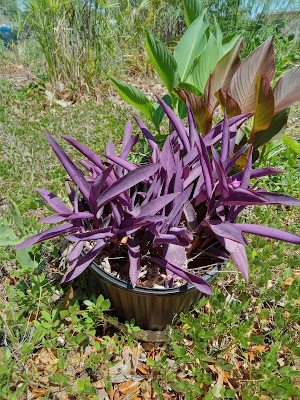A wicking bed is a type of sunken garden bed that uses a wicking system to deliver water to plants from a reservoir at the bottom of the bed. This system allows plants to get the water they need without the need for constant watering.
Wicking beds are a great option for anyone who wants to grow their own food or medicine but doesn't have the time or energy to water their plants regularly. They are also a good choice for people who live in areas with limited water resources, or people who live in hot southern areas like Florida and Texas.
How to Make a Wicking Bed
Building a wicking bed is a relatively simple process. Here are the basic steps:
Choose a location for your wicking bed. The location should be in a sunny spot and have well-drained soil.
Clear the area of any weeds or debris.
Lay down a waterproof barrier such as a tarp or pond liner that is at least 5 mils thick.
Place a layer of rocks such as tumbled river stones on the barrier, this is your reservoir layer.
Place a layer of wicking material in the bottom of the bed. The wicking material can be made from a variety of materials, such as geotextile fabric, coconut husk, or even old towels.
Create a bed of soil that is at least six inches thick. You can do this by layering a variety of materials, such as newspaper, cardboard, leaves, grass clippings, and compost.
Wet down the materials as you layer them.
Plant your plants in the top layer of the soil.
Water your plants regularly.
Fertilize your plants as needed.
Or you can use a large barrel, with the top cut off, a few pipes added, like in the diagram.
There are many benefits to using wicking beds. Here are a few of the most important ones:
Reduced watering. Wicking beds require much less watering than traditional garden beds. This is because the wicking system delivers water to plants from the reservoir at the bottom of the bed.
Reduced weeds. Wicking beds are less likely to be overrun by weeds than traditional garden beds. This is because the wicking system helps to keep the soil moist and prevents weeds from germinating.
Increased yields. Wicking beds can produce higher yields than traditional garden beds. This is because the wicking system helps to keep plants healthy and allows them to absorb more nutrients.
Improved soil quality. Wicking beds can help to improve the quality of the soil in your garden. This is because the wicking system helps to aerate the soil and break down organic matter.
Here are a few tips to help you get the most out of your wicking bed:
Choose the right materials. The materials that you use in your wicking bed will affect the quality of your soil and the success of your garden. Make sure to use materials that are high in organic matter and nutrients.
Keep the soil moist. The soil in your wicking bed should be kept moist, but not wet. Too much water can cause the materials to decompose too quickly and can also lead to waterlogged soil.
Fertilize regularly. Your wicking bed will need to be fertilized regularly. Use a balanced fertilizer that is specifically designed for organic gardens.
Be patient. Wicking beds take time to establish themselves. Enjoy the process!

















